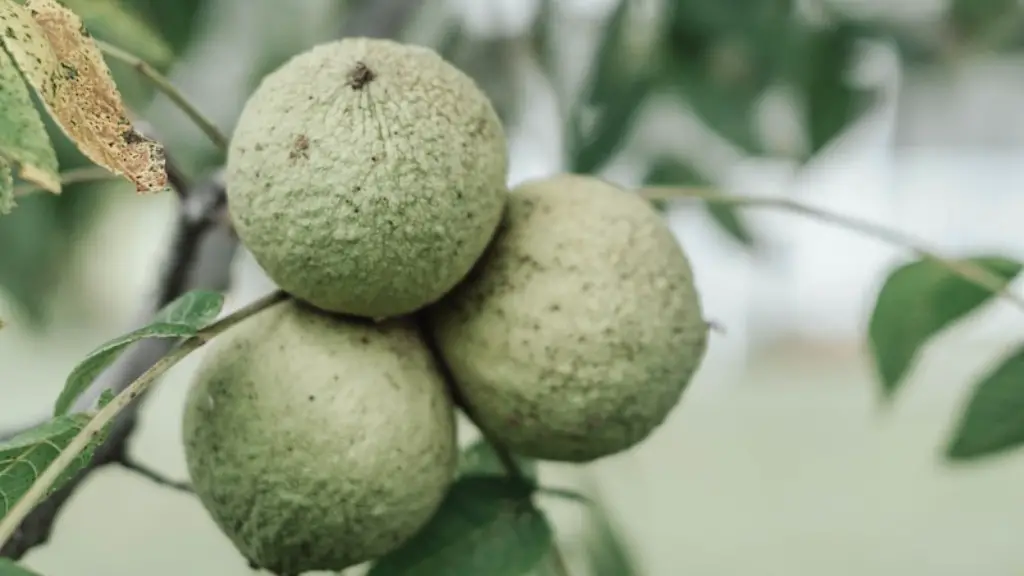Growing a lemon tree in a pot is a rewarding and enjoyable experience. A potted lemon tree requires a bright location that receives a few hours of direct sunlight each day. Good soil drainage is essential, as well as regular watering, fertilizing and pruning. With the right care, your lemon tree should reward you with fragrant flowers, tart fruit and beautiful foliage.
The pot for your potted lemon tree should be at least 24 inches deep and several inches wider than its root ball. For potting soil, mix a rich potting soil with 1/3 organic compost or aged manure, 1/3 coarse sand and 1/3 perlite or coarse builder’s sand. Make sure the soil stays moist but not overly wet. Water the lemon tree as often as needed to keep the soil moist until you start to see new growth.
Fertilizing can be done about once a month in the spring and summer months. Use a general-purpose fertilizer that is formulated for acidic soil. Avoid an overdose of fertilizer, as this can potentially damage the plant. Prune the potted lemon tree by cutting off dead or diseased branches, crossing branches and branches that might be shading other areas of the tree.
When the lemon tree has flowered and the fruit has formed, it is time to pick the lemons. Be careful not to break the stems off the fruit when picking. If the branches look overloaded with fruit, consider thinning them out to reduce the risk of limb damage due to the weight of the lemons. Finally, covering your lemon tree with a fabric or aluminum mesh can help protect it in the winter months.
Protection from Frost
The best way to protect your lemon tree from frost is to bring it indoors when the temperature starts to drop. If you cannot bring the tree indoors, make sure it is in a sheltered spot and cover it with fabric or an aluminum mesh to protect it.
Also, prune the tree in the winter months when it is not actively growing. Pruning will help keep the tree healthy, and removing any dead branches will maximize air circulation and help protect it from frost damage.
If the tree is subjected to extreme cold weather, the leaves may become brown or brittle and drop from the tree. If this happens, cover the tree with a blanket or tarp and wait for spring. The tree should then regrow its leaves and be healthy again.
When the weather starts to warm, take the cover off your lemon tree and move it out of the shelter. Be sure to give it enough space to receive ample sunlight, and enjoy the fragrant flowers and tart fruit.
Pest Control
Since lemon trees can be susceptible to pest infestations, preventive measures should be taken to keep insects and disease away. A good idea is to regularly check the lemon tree for signs of pests, such as small holes in the leaves or premature leaf drop.
If you discover any pests or signs of disease, use appropriate insecticides or fungicides and follow the directions on the label. If the infestation is severe, you may need to consult with a professional. This will ensure that the problem is handled effectively and safely.
You can also protect your lemon tree from pests by keeping it in a well-ventilated area and avoiding over-watering. Again, pruning also helps keep the tree healthy, and removing dead branches discourages insect infestations.
Finally, making sure to use the right fertilizer can also help protect against pests, as can putting the right soil mixture in the pot. Too much nitrogen in the soil can be a breeding ground for colonies of pests. If you are unsure of the ideal fertilizer, consult a professional.
Propagating a Lemon Tree
Propagating a lemon tree is an easy way to produce additional trees. The best time for propagation is during the summer months. One approach is to use cuttings. Cut a three to four inch length of a healthy branch from the mother tree. Remove the leaves from the cutting and dip the end into a rooting compound before planting it in a soil-sand mixture.
The cuttings should be planted in small pots, and should be watered immediately and kept moist until it starts to grow. The small pots should be placed in a bright location, but not in direct sunlight. In a few weeks, the cuttings should start to show signs of growth.
Another method to propagate your lemon tree is to use a grafting technique. The most common grafting technique is the ‘budding’ method, which requires a long, slender scion and a section of the rootstock. As with cuttings, these should be planted in a small pot and placed in a bright spot.
With both methods, it is essential to keep the soil moist. The propagated trees should be transplanted into larger pots when they have become established. The transplanted trees should be given full sun and regular feeding, and should be pruned as needed.
Fertilizing and Watering
Regular watering and fertilizing are essential for healthy lemon tree growth. The plant should be watered when the soil just starts to dry out, and should be fertilized every week with a slow-release fertilizer designed for acidic plants. Taking note of the nitrogen, phosphorus and potassium (NPK) ratio listed in the ingredients is important, as too much nitrogen can encourage pest infestations.
For best results, fertilize the tree once a month during the spring and summer months. If the lemon tree is located outdoors and is receiving ample rainfall, an additional application of fertilizer is not necessary. If the plant is indoors, however, it is important to keep the fertilizer levels up.
To avoid over-watering, use a small container of water to gradually and gradually moisten the soil. Do not let the soil become water-logged as this can cause root rot. When drawing water from a faucet, let it run for a few minutes to reach room temperature before using it on the lemon tree.
Encouraging Flowering and Fruit Production
Encouraging lemon trees to flower and fruit can be done by providing them with the right amount of sunlight. A bright spot that receives at least four hours of direct sunlight daily is ideal, so move any larger plants away from the lemon tree. The ideal temperature for growth and flowering is between 55 and 70 degrees Fahrenheit.
Additionally, increase nitrogen levels in the soil to encourage flowering. This can be done with a slow-release fertilizer, or by topping the soil with a light application of compost in the springtime. Reducing nitrogen levels in the fall can also help encourage fruiting.
Another approach to promoting flowering and fruiting is to use the ‘pinching technique’. Select a branch of new growth, at least four inches long, and pinch off the tips of the branch. This will encourage additional branching and more potential flower buds.
Finally, making sure to protect the lemon tree from extreme temperatures, such as cold weather, will help ensure a healthy growth and flowering cycle.
Summary
Growing a lemon tree in a pot is a rewarding and enjoyable experience. A well-draining soil mixture is essential, as well as regular watering, fertilizing and pruning. Cover the lemon tree to protect it in the winter months, and Prune the potted lemon tree by cutting off dead or diseased branches.
Propagate the lemon tree by using cuttings or grafting methods. Regular watering and fertilizing using slow-release fertilizers are important. Finally, ensure that the tree is receiving the right amount of sunlight and protect it from extreme temperatures to ensure a healthy growth and flowering cycle.





